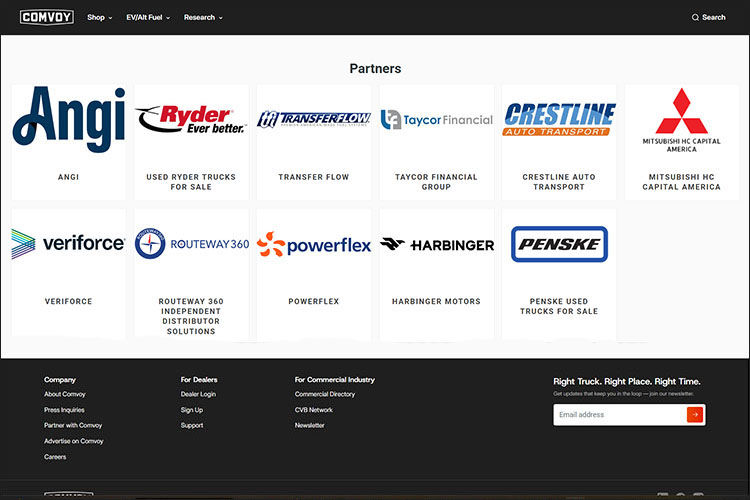Revolutionizing Trucking with Hydrogen Fuel Cell Vehicles


Revolutionizing Trucking with Hydrogen Fuel Cell Vehicles
Here in the NuPropel section of Comvoy.com, we explore various technologies that businesses and commercial fleet managers can employ to realize their environmental and sustainability goals (ESG); technology such as propane-fed internal combustion engine (ICE) vehicles and battery electric vehicles (BEV) are two such options.
Propane, also known as liquid petroleum gas (LPG) or autogas, is a mature green technology enjoying renewed interest as emissions regulations tighten worldwide.
Battery electric vehicles (BEV) are another option for fleets looking to reduce emissions. Although commercial BEVs are relatively new, they have been gaining traction as availability, range anxiety, and charging infrastructure are being addressed.
In the quest for sustainable and cleaner transportation solutions, a third zero-emission alternative for commercial fleets is emerging: fuel-cell electric vehicles (FCEVs).
How do FCEVs Work?
A Fuel Cell Electric Vehicle (FCEV) operates by converting hydrogen gas into electricity through a chemical reaction within its onboard fuel cell. The vehicle stores hydrogen in high-pressure tanks, which is then fed into the fuel cell stack. Once in the fuel cell, hydrogen molecules are split into protons and electrons through a catalyst.
Protons pass directly through a proton exchange membrane to the other side of the fuel cell, while electrons are forced through a circuit, creating a flow of electricity that powers the vehicle's electric motor. At the cathode side of the fuel cell, the electrons and protons reunite, combining with oxygen from the air to produce water and heat as byproducts.
This elegant operation allows FCEVs to run efficiently and emit nothing but water vapor, offering a compelling solution for zero-emission transportation.
The Shift Toward Fuel Cell Electric Vehicles (FCEVs)
When comparing FCEVs to BEVs and traditional vehicles, it's clear that FCEVs hold a unique position, especially in commercial applications where range and refueling time are critical factors.
Addressing Range Anxiety with FCEVs
Range anxiety has been a significant barrier to the widespread adoption of electric vehicles. FCEVs mitigate these concerns with their ability to travel longer distances between refueling, akin to conventional vehicles, while maintaining the benefits of electric propulsion. Commercial fleets across the globe are beginning to recognize the potential of FCEVs to enhance their operations, notably in long-haul transport, where range capabilities are paramount.
FCEV Tire Wear Compared to BEV
Given that FCEVs are typically lighter than their BEV counterparts, owing to the inherent efficiency and compact nature of fuel cells, there is a consequential reduction in tire wear. This not only translates to lower maintenance costs but also further bolsters the environmental benefits of FCEVs through reduced resource consumption.
FCEV Cargo Capacity Compared to BEV
The lighter nature of FCEVs, as opposed to BEVs, inherently increases their usable payload capacity. This is particularly advantageous in commercial settings where maximizing cargo load without compromising efficiency is paramount. The potential to transport more goods with fewer trips can significantly enhance operational efficiency and sustainability.
The Impact of FCEVs on Grid Load
The surge in EV adoption poses notable challenges to the existing electrical grid infrastructure, primarily due to the increased demand for power. FCEVs, by utilizing hydrogen as a fuel source, mitigate this strain by reducing reliance on the grid.
Refueling Infrastructure
Recharging is a primary concern for any organization considering fleet electrification. For FCEVs, however, the concern is hydrogen refueling. The good news is that for the end-user, hydrogen refueling is much the same as for traditional fossil fuel vehicles.
The not-so-good news is that hydrogen refueling infrastructure is even less advanced than BEV recharging infrastructure. This is all changing rapidly, though, especially as the Department of Energy has invested billions of dollars in incentives for hydrogen development, encompassing funding, research, and infrastructure support. By alleviating initial challenges such as high costs and limited infrastructure, these incentives are setting the stage for a more pronounced presence of FCEVs in the commercial sector, benefiting manufacturers, fleet operators, and the broader transportation ecosystem.
Challenges and Considerations
FCEVs maintain a promising outlook, but adoption faces hurdles regarding infrastructure development, commercial usage feasibility, and upfront costs. The journey towards green transportation is multifaceted, and FCEVs are at the forefront of this transformation. Major players like Nikola, Hyundai, and Hyzon are pioneering the change and revolutionizing the commercial sector by effectively addressing range anxiety and reducing grid load. Their rise not only represents a significant leap towards sustainable transportation but also highlights the collaborative efforts required to make a cleaner, greener future a reality.
The recent announcement that Honda will collaborate with General Motors to produce a Class 8 vehicle punctuates the point that synergies will be key to achieving sustainable transportation.
Together, these companies embody the collaborative efforts and technological advancements propelling the commercial sector towards a zero-emission future, highlighting a collective commitment to making sustainable transportation a practical reality.
Return to NuPropel page for more articles all about advanced fuels and zero emissions vehicles.
SHOP ADVANCED FUEL VEHICLES NOW
Published on: June 11, 2024






